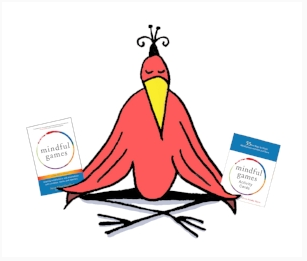
3 Mindful Exercises We LOVE Doing With Kids
We love the direction Eline Snel offers in her book and collaborating CD, Sitting Still Like A Frog, Mindfulness Exercises For Kids (and Their Parents). Part of her experience comes from a successful mindfulness school program called The Eline Snel Method in which 300 children, 12 teachers and 5 schools experienced a calmer classroom atmosphere, better concentration, more openness and children became kinder to themselves and others, more confident and less judgemental.
At home, mindfulness can help create the same balance and calm--- isn't that a wonderous thought! Snel offers that mindfulness exercises are great for children age 5 and up and help calm churning thoughts, gain understanding of emotions and improve concentration. Mindfulness exercises are really helpful for children who suffer from low self-esteem. Many children are insecure, not feeling good at things or cool enough to fit in. They worry and then deal with their distorted self-image by either withdrawing or drawing attention to themselves, by trying to please others, being selfish or by bullying or acting tough. They become trapped in behavioral patterns that don't serve them.
Mindfulness is not therapy, but it can be therapeutic in giving kids (and adults) a different approach to dealing with their lives' very real issues.
In addition to Eline Snel's insight, we've created a list of our favorite 3 Mindful Games you can do with your kids and teens from a set of game cards by Susan Kaiser Greenland with Annaka Harris.
3 of Our Favorite Mindful Exercise Games
Life Is AWESOME (We modified the title of this game from it's original Life Is Good by Susan Kaiser Greenland to collaborate with a book project we did in a classroom game)
As we roll a ball back and forth, we name things that bother us, while remembering the good things in life by adding, and life is awesome. Duration: 5-10 mins. Supplies: Ball or yoga ball. Age: All Ages.
Leading The Game
- We're going to roll this ball to each other. When the ball comes to you, name one thing that's bothering you. Then roll the ball back and say, and life is awesome.
- I'll go first. I lost my necklace today... Roll the ball to someone else while saying, and life is awesome.
- Now you name something and roll the ball to someone else. Guide players in speeding up the pace as the play continues.
Tips
- This game can be played with partners sitting across from each other or as a group sitting in a circle.
- This game is not about pretending that challenges don't exist. First we acknowledge the challenge, then we reframe it by bringing awareness to the positive things in our lives too.
Counting Breaths
We count breaths to help develop concentration. Just like playing a sport or an instrument, the more we practice, the better we are at concentrating. Duration: 2-10 minutes. Age: All Ages.
Leading The Game
- Sit with your back straight and body relaxed, resting your hands gently on your knees.
- Breathe in naturally and silently count ONE in your mind. Then as you breathe out, relax your forehead. Raise one finger and wait for everyone to breathe in and out.
- Let's do it again. Breathe in naturally and silently count TWO in your mind. Then, as you breathe out relax your neck and shoulders. Raise two fingers.
- Now breathe in and silently count THREE in your mind. Then, as you breathe out, relax your tummy. Raise three fingers.
- Let's try it again, but this time I'm not going to talk. Sync your breath to my hand motions, counting silently on your own. Don't forget to relax as you breathe out.
One Bite At A Time
We slowly eat one bite at a time to relax, enjoy and appreciate the moment.
Leading The Game
Find a comfortable place to eat. Choose a simple food that can be eaten one at a time (e.g., grapes, blueberries, or raisins) and place a few in each child's cup.
- Pick up the food and notice how it looks, feels and smells. Notice what you're thinking and how you feel while you're holding the food before you eat it.
- Pop the food in your mouth, but don't chew it yet. Notice what it feels like on your tongue. Is your mouth watering?
- Now chew it slowly and then swallow it. Pay careful attention to how each step feels.
- Talking points: What was it like to hold the food in your mouth but not eat it? How did your mouth feel while you were chewing? How did your throat feel while you were swallowing? Did you notice any thoughts or emotions?

